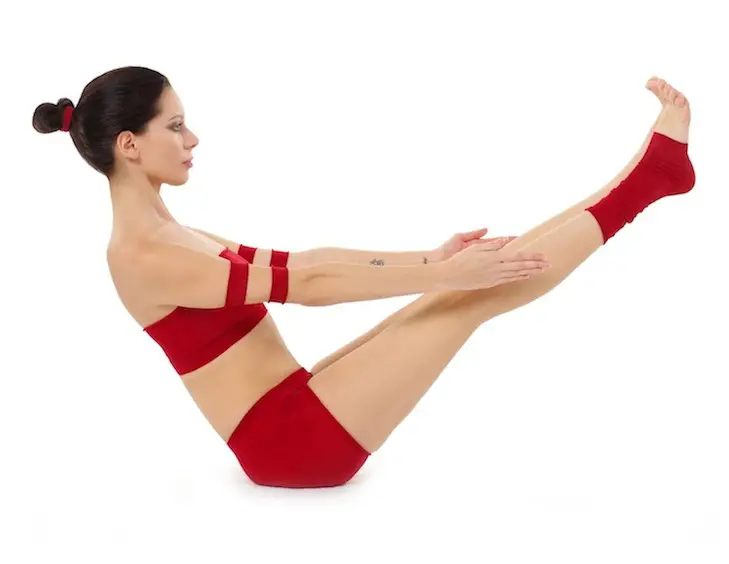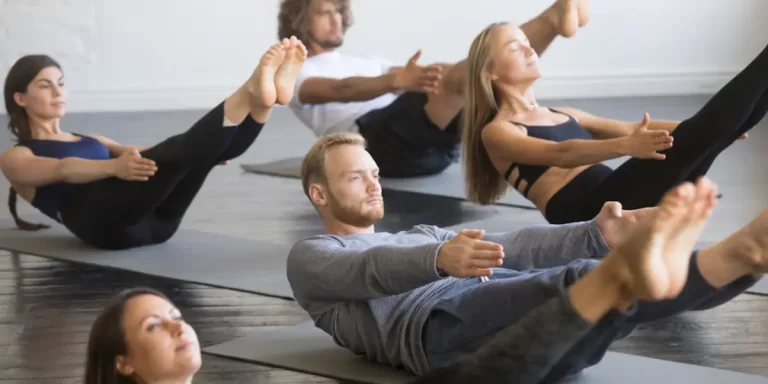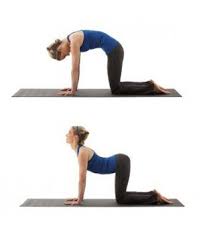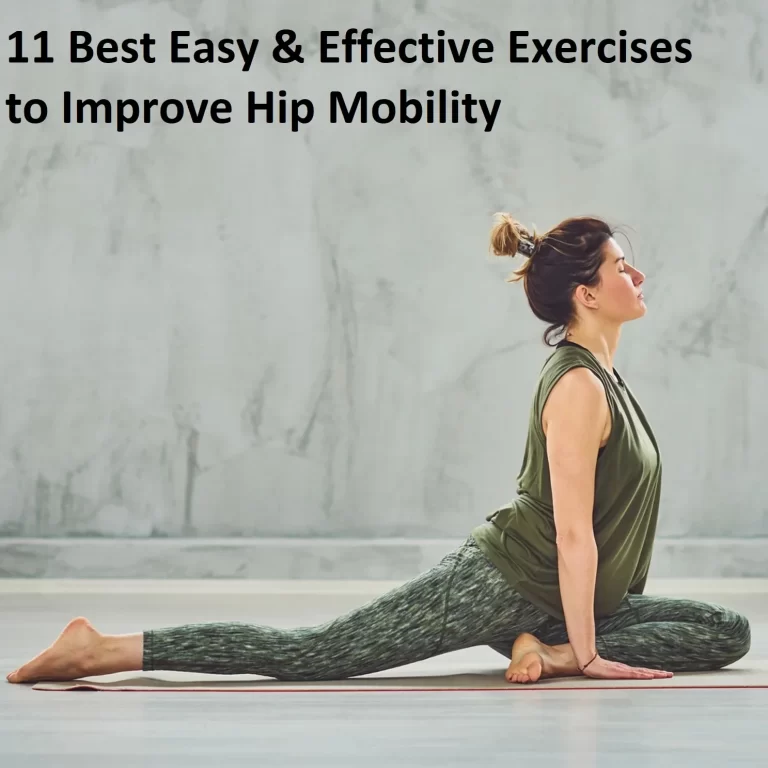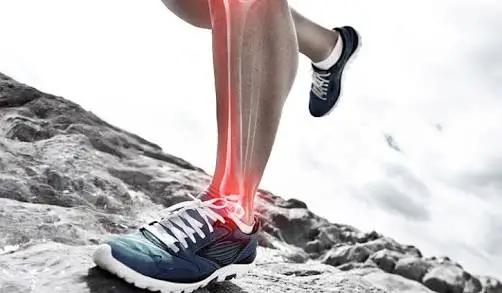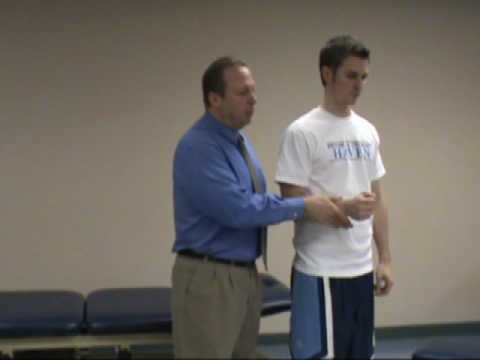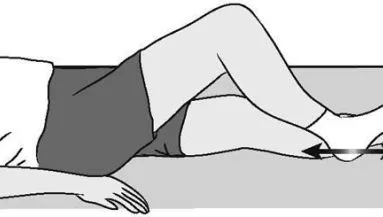Naukasana: Health Benefits, How to do?- Variations
What is Naukasana?
The name Naukasana is nearby from the Sanskrit words Nauka means the boat and Asana mean Position or seat or Posture. Also known as Navasana, Naukasana, Boat Position, Full boat position or Paripurna Navasana is a seated asana in present yoga as exercise. This yoga position has been named after the shape it takes – that of a boat. Naukasana is decided as NAUK-AAHS-uh-nuh.
This boat position is useful to heal much physical confusion. Naukasana helps to strengthen the lungs, liver, and pancreas. It helps to enlarge the blood circulation and keep the sugar level. It constructs the blood of circulation and oxygen about the abdomen and lowers back at a time much quicker. Naukasana is good for those who wish to reduce their belly and want to emerge abs muscles.
What are the Health Benefits of Naukasana?
Naukasana steps are basically to strengthen the abdominal muscles, Vertebral column, and Hip flexors. But besides that, it does so much other correctness to our bodies.
Tones and Energize Abdominal Organs:
When you transfer out Naukasana, your abdominal organs arrangement, stretch and relax, which helps you waste belly fat. The digestive, absorption, and transfer processes are refreshed when the abdominal organs are restorative. The gratification of Naukasana healthy digestion comprises stopping constipation, and acidity, and keep going a muscular metabolism.
Redevelop Iliopsoas Muscle:
Psoas and Iliacus work together to aspect the Iliopsoas muscle, so that is the strongest hip flexor. The purpose of standing, running, and walking all are determined by this body muscle. The Iliopsoas is redeveloped by the Naukasana, which uses all four pairs of abdominal muscles.
Strengthens the Body Muscles:
It is the build-up of the shoulder, arms, back, abdominal, and thigh, muscles. Bundle of the leg and arm muscles. The arms are stretched ahead, the thighs are disposed at 45 degrees, the shin is parallel to the ground, and the feet are pulled up during the exercise of Naukasana. All of these motions have strengthening and stretching results on the body’s various muscle groups. This strengthens your entire body from the interior out, allowing you to have a more muscular exposure. It build up the muscles of the neck, shoulder and the legs. Naukasana steps and satisfaction increase the capability in the muscles of the shoulder and neck.
Perfect Weight Loss:
You can lock up impenetrable fat in an all right and more perfect way with the Naukasana. The stretching, compressing, and relaxing of the abdominal organs while performing the Boat Position aids in the loss of too much stomach fat. The most important device is to exercise the position regularly while paying close consciousness to positioning. It is a perfect and successful position to be on fire belly fat when perfected always. The stretching, compressing, and relaxing movement of the abdominal region is unbalanced with Naukasana is a really good and effective way of burning belly fat if prepared on an always basis. Helps in increasing six-packs of ABS.
Healthy Pancreas, Liver, and Kidneys:
Naukasana is necessary for continuing the health of the pancreas, liver, and kidneys. The position better the operating of these three organs. Stimulant pancreas, kidneys, and liver. The kidneys and liver are more important for washing the body because the pancreas is hope for the blood sugar adjustment. The uses of naukasana are to improve the health of all the organs in the abdomen, most especially the pancreas, kidneys, and liver prostate glands. Useful for people with a hernia.
Restore Umbilicus Displacement:
The word “Umbilicus displacement” is used in Yogic belief to relate to a situation in which the umbilicus center changes. Constipation, stomach discomfort and a loss of stomach are common symptoms of umbilicus dislocation. The umbilicus is massaged in this stance, so that accommodate the healing of the disease.
Placid Mind:
The Naukasana, as most yoga asanas, is a stress agent that needles your mind calm and relaxed. You can acknowledge the present moment, work rapidly, and continue a healthy body if you have a relaxed mind. The useful of naukasana comprises easing in distress tool and safekeeping the mind free and restful of struggling. If you have low blood pressure, migraine and severe headache, you must circumvent this yoga position.
What are the Preparatory poses for Naukasana?
Adho mukha svanasana, Uttanasana
How to Perform Naukasana / Boat Pose?
Begin by deceiving down flat on your yoga mat, with your feet in coincidence and your arms by your sides. verify that your arms are straight and fingers are outstretched about your toes.
Stay behind in this position for a while verify and breathe rhythmically.
Extract a deep breath in and being you expire, lift your chest and feet off the floor, stretching your arms and fingers respecting your feet.
Your eyes, fingers, and toes would be in one line.
Feel the hardness in your umbilical area as the abdominal muscles contract.
The buttocks should command the proper weight of your body.
Keep breathing deeply and simply spell maintaining the position.
Keep the position for a few seconds.
As you expire, come back to the ground slowly and relax.
Continue your breath and stand in this position for 10-15 seconds and enlarge the time keep according to regular exercise.
Duration 3-4 repetitions daily but should not substantial dose.
It also generates a part of the Padma Sadhana progression, where this yoga position is exercised after Dhanurasana (Bow Position).
How to do Naukasana by watching a video?
What are Follow up poses for Naukasana?
Adho mukha svanasana, Baddha Konasana, Utkatasana, Halasana, Sirsasana, Shalabhasana, Bhujangasana, Dhanurasan
What are the Types of Naukasana?
There are three types of Naukasana.
- Ardh Naukasana (half boat pose)
- Paripurna Naukasana (full boat pose)
- Eka pada Naukasana (One leg boat pose)
Ardh Naukasana (half boat pose)
What is Ardh Naukasana (half boat pose)?
Ardha navasana or half boat position is a seated balancing position that requires a forward bend. Keeping the level of difficulty and amount of need strength in mind the position lies down in the median level.
Ardha asana is performed in the supine position. It selects working the abdominal muscles, adductor muscles, and hip flexors. Besides these, it also involves the quadriceps, hamstrings, and spine. Along with providing flexibility and strength to the body, it also strengthening and better the mental health of the facilitator.
What are the Health Benefits of Ardh Naukasana (half boat pose)?
Strengthens the body:
Half boat position works the muscles of the abdomen, hip flexors, and spine. This increase the endurance of muscles and makes them stronger. The core muscles are also involved along with arms and legs, therefore it strengthens the full body.
Improves balance:
While holding the position, the full body is balanced on the sitting bones. The lower body and the upper body are raised, thus the position is all about finding stability. With regular practice, body balance improves Yoga therapy and ambulatory multiple sclerosis.
Burns belly fat:
This position involves the contraction of abdominal muscles and supply as a workout for them. This makes the practitioner’s body toned and the energy finished on holding the position helps to burn the extra fat layer of the abdomen. Ardha navasana further with other yogic practices helps in managing weight organization and getting clear of obesity.
Improves digestion:
Ardha navasana requires the abdominal muscles that cause the stimulation of digestive organs. This improves the functioning of the digestive system and prevents connected disorders.
Increase blood circulation:
It controls the blood circulation in the lower body. Increased blood circulation aids in relieving pain, vibrate, and stiffness in the legs. Except, it constructs them stronger.
Improve self-confidence:
It activates the Manipura chakra detected behind the umbilical. This chakra is connected with energy and willpower. Therefore, Ardha navasana helps in expanding self-confidence and self-approval. A scientific study Administration purpose improve exercise self-efficacy and exercise behavior anyway of task awkwardness has also demonstrated that regular exercising such asana helps in improving self-approval in handling any task.
Improves detoxification:
Ardha navasana operates the kidney and helps in the detoxification operation. With increase detoxification, helps to absorb necessary nutrients. It also aids in strainer blood and sustains homeostasis.
Stress buster:
Removing the toxins from the body positions peaceful the mind and reduces stress, anxiety, and even depression. Hence, the Ardha navasana is also supplied as a stress buster.
What are the Preparatory poses for Ardh Naukasana (half boat pose)?
- Adho Mukha Svanasana (Downward-facing Dog Position)
- Uttanasana (Standing Forward Bend)
- How to Do Ardha Navasana (Steps)
How to Perform Ardh Naukasana (half boat pose)?
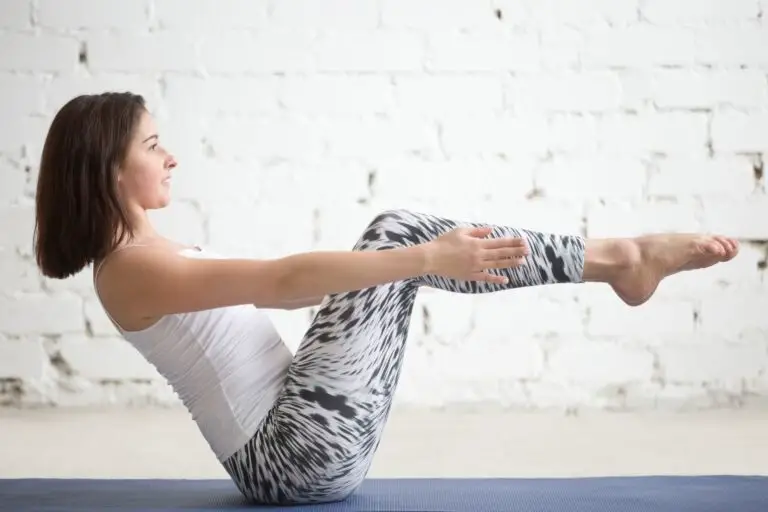
Sit on your floor with your straightened legs stretched in anterior, i.e. dandasana.
Fold your knees self keeping the leg on the mat and hands on your side.
Roll your shoulders back and bend slightly on your back.
Bring your hands after your knees.
Inspire and start lifting your feet off the floor and increase your lower legs so that they become parallel to the floor.
Try to realize balance on your sitting bones.
Release your hands and increase your arms with the fingers pointing forward. Keep their collateral to the floor, in line with the lower legs.
Stay in the position for 30-60 seconds. Keep breathing generally.
Expire and take hold of your knees and bring your feet back to the floor.
Inspire draw your upper body to the core keeping the spine straight.
With an exhalation rearrange your legs and bring your hands to the floor.
rather of bringing hands to knees level, hands with intermixed fingers a return at the back of the head and then bend back.
Then legs are stretched linear forward and keep them rigid at an angle of 30 to 35 degrees.
Other steps of coming out of the position are performed in the same manner.
What are Follow up poses for Ardh Naukasana (half boat pose)?
The various follow-up position for Ardha Navasana are Adho Mukha Svanasana, Baddha Konasana, Halasana, Salamba Sirsasana and Utkatasana. These positions have always been demonstrated to be very useful for the mental and physical state of the body.
What is the Ardha Navasana (Half Boat Pose) Beginner’s Tip?
In case you find this position challenging, then you can practice this position by sitting on the lead of the chair and your knees must be bent at a right angle. You need to grasp the side of the chair with the assistance of your hands and pull your body forward. Keep your arms vertical and upraise your buttocks off the chair. You are supposed to stand in this position for some time and raise your heels from the floor. Lift you sternum forward and upward and endure in this position for some time. Reality a beginner, you can also take the benefit of the belt around the soles of the feet to help in straightening your legs. Keep the abdomen hard but do not let the belly get puffed out or thick.
What are the Modifications and Variations in Ardh Naukasana (half boat pose)?
- Using a wall – Conduct Ardha navasana by placing your feet on the wall while keeping the lower legs parallel to the floor. This helps in keep going the balance while holding the position.
- Using a block – Place a cube at your lower back. bend back taking its support. It also helps in supporting your back while stocking the position and clam it a little bit.
- Folded blanket – Use a folded blanket or spray block and perform the asana sitting on it. This will supply an extra extension to your spinal muscles and prevents slumping on the back by put in a little height.
- Using a chair – Conduct Ardha navasana sitting on a chair. This helps the spine to obtain support from the chair’s back, the hands can take hold of the seat’s side, and the chest opens well. The chair makes the position a lot uncomplicated by providing extra height, back support, and hand grip.
- Paripurna Navasana (Full Boat Position) – Unlike the half boat position, the knees are not bent and the legs are stretched fully. The head and feet kept disposed. The upper body is constructed with the lower body and the full body appears like a boat.
- Eka pada Navasana (One-legged boat position) – As the name propose, it involves the extension of only one leg. Anyway, the other leg stay behind on the floor bent in towards the extended thigh. Then it is replicated by switching the legs.
- Half Boat Variation Arms Overhead – Near, after attaining the position, lift your arms overhead with your fingers pointing towards the roof. Extend the arms and dispose of them with the spine.
- You can also practice Ardha navasana by yourself keeping the hands behind your back with the palms moving the floor.
- Holding the Ardha Navasana position demands an unbending back and it in the end works to strengthen the back muscles. It also involves the abdominal region that starts off the Manipura chakra (Solar plexus). This helps the practicians to gain confidence and increase self-respect.
What are the Precautions and Contraindications for the Ardh Naukasana (half boat pose)?
- Countless precautions need to be considered earlier to venture into the position.
- Those women who are fatigued or are pregnant must also try to circumvent this practice.
- Ardha Navasana is not sensible if you are suffering from chronic headaches, heart problems, insomnia, low blood pressure, diabetes, asthma, diarrhea, and injury in the abdomen. You must also invalid practicing this position in case you have a severe neck, knee, back, hip, shoulder, arm, and ankle injury.
- In case you have a neck problem, then you are guided to practice this position against the wall in the organization to prevent the neck strain. Your head can rest over the wall while you increase your legs.
- In the case of Insomnia or when a heavy head, abstain from doing half boat position.
- Always practice Ardha navasana with an unswerving back and avoid any slumping.
- Do it under genuine advice to prevent misalignment and internal injury.
Paripurna Naukasana (full boat pose)
What is Paripurna Naukasana (full boat pose)?
In Sanskrit, “marijuana” means entire, full, or complete, “Nava” means boat, and “asana” means position; therefore, the English name: Full Boat Position. For all the attempts and many actions involved, finding strength in this posture can help calm and position your body, mind, and emotions.
Sit on the ground with knees bent, feet flat, and legs together. glide your hands a little behind your hips, fingers pointing as regards your feet and elbows bent away from you. Lean back moderately and raise your heels an inch or two off the floor. Make certain your the back does not round but stays linear throughout this position.
Draw your shoulder blades together temporarily to raise and open your chest. Slowly begin to adjust your legs through the heels. Preferably, when your legs are fully straightened, your thighs should be pointed about 45 degrees to the floor and the ends of your toes should be faintly above the level of your eyes. If you are powerless to straighten your legs while upraise them, try keeping your knees bent (ascend parallel to the floor).
Now, stretch your arms forward across your legs, palms facing down. Layout your shoulder blades across your back and reach strongly out through your fingers (while keep going a straight back and long torso). Your arms should be collateral to everyone other as well as to the floor. If you are powerless to raise your arms while in Paripurna Navasana, again grip the back of your thighs or keep your hands beyond your hips where they were.
Open your chest and modify your shoulders downwards to your back. Put as much attempt into raising your chest as you are into lifting your legs. Breathe continuously and hold for 2-6 breaths. Slowly increase your sufferance before you can hold the posture for a full minute. To free: conduct the legs in as you run out and sit upright as you swallow in.
What are the Health Benefits of Paripurna Naukasana (full boat position)?
Stretches, Strengthens, Lengthens:
Paripurna Navasana (Complete Boat Position) is a core strengthening position integrated with a powerful quadriceps, pelvic floor muscles, gluteus, hip flexors (including the psoas and iliacus), and chest. While belongings the posture, the quadriceps are contracted with an incomplete lengthening of the hamstring muscles. This movement helps build up the leg muscles supporting the hips to endure strong and strong. In addition, the pelvis (in this case it is in posterior tilt), the hips joints (which are flexed), the internal rotation of the thighs, the raising of the knee cover, the raising of the sacrum, and the broad chest (principal to the scapula coming together), and the strong neck (cervical spine) together help to bring stability to the posture, keeping the body in a state of sthira sukham. The lengthening of the arms should not cause the shoulders to slump, and with awake efforts the chest is wide and powerful to help extend the front upper torso. Hence, while the full body’s muscles and joints are unavailable, the only extent that is happening here are the hamstrings, birdling, and arms.
Flexibility and Range of Motion /Adjustment and Posture:
In Paripurna Navasana the full lower body is stretched from the hips to the head of the toes. The adductor muscles work to retain the inner legs compress together. The ankles and the toes work, to grant the total stretch to the legs. This increases the elasticity of the lower body. The muscles of the spine are unavailable (the spine is in the natural shape) to keep the torso strong and stable. The hips gain strength and flexibility as the involved muscles work to support them. With time when students get restful with Complete Boat Position, the challenge can be moved towards the practice of Boat Position Arms Overhead (Urdhva Hasta Paripurna Navasana), Raised Legs Position Knees Bent Variation Boat Position Flow (Uttana Padasana Nata Janu Navasana Vinyasa), or similar position that command more flexibility and strength in the hips, pelvis, and shoulders.
Chest, Diaphragm, and Breath:
In Paripurna Navasana (Complete Boat Position) with the core and abdominal muscles attached, the breathing is attacked, sometimes bringing difficulty in breathing deep. Nonetheless, when the students are commanded to broaden their chest and rib cage, they can be directed towards their breath. The breath awareness will in the end help students arrest their upper body including their shoulders to effectually use the chest, rib cage, and intercostal muscles (breathing muscles), supporting the diaphragm in its operating. This will in the end help the lungs take in more oxygen and circulate it through the full body. With improved breathing (systematic use of the lungs), students can move to other challenging practices like Revolved Boat Position(Parivrtta Navasana), Boat Position Variation Scissors Flow, or any other variation that commands lung capacity.
Awareness and Focus (Concentration):
The word core in yoga is behind just the muscles or abs. The practice guides you on an inside journey from the boundary of your body to the element of your being. This position is not just an abnormal crunch, that is absolutely for gaining toned abdominal and core muscles, but it conducts awareness to the center of the body. The combination of all of the body parts in this position will leave you foreboding strong as well as inwardly and emotionally immovable. Besides, if the mind maunders and moves aside from the breath, adjustment, and the body, the balance is passed, creating a disrupted body-mind relation. Hence in an aware effort to maintain the balance, increase awareness, and the center becomes testing. Therefore, keeping the gape (Drishti) at one point, maintaining the balance by putting similar weight on both sit bones (buttocks), drawing the shoulders beyond, lifting the spine upwards, and pushing the sit bones down, and consciously safekeeping the body light and moveable (yet pleasing the muscles ) upgrade the practice, bringing a state of inner happiness.
Energizing, De-stressing, Relaxing:
Paripurna Navasana (Complete Boat Position) is an energizing position. The conscious realization of deep breathing, and engagement of the involved muscles support the body to stand longer in the posture. The delivery of the position brings a fresh provide of oxygenated blood to the internal organs and heart, gentle the nervous system. On the other hand, the external flow of air(apanavayu) is better, clearing the path for the natural inflow of anima, and with this natural inflow of power, the body is renovated and energized. With an energized mind and body, the levels of stress decrease, moderating the nervous system. This increased power can help students conduct more challenging positions, which will further increase their prana.
Stimulation and Organs/ Circulation and Systems:
After the abdominal muscles are unavailable in this position, the interior organs and the connected body purpose and systems are stimulated. With the abdominal and pelvis animation occupied, the functioning of the glands is upgraded, mainly the digestive system. Besides, the organs system is also tonic, thus existence a good practice for women with infertility problems, or menstrual connected symptoms. At the time of free the position there is a natural contribution of blood through the complete system, affecting the ingestion and general forceful systems.
Therapeutic, Healing, and Ailments:
Comprise in Therapy Yoga (not for students who are senior citizens), the addition of Complete Boat Position can help address problems connected to diabetes, not-so-severe conditions associated with IBD (Inflammatory Bowel Disease), women with infertility problems, women with diastasis recti, men and women trading with urinary incontinence, or any other problems connected to the operating of the internal organs. Though, if students detect the practice of Complete Boat Position an opposition but still want to address the above connected physical conditions, then add the adjusted practice like Boat Position Variation On Chair, or Boat Position Block joining Knees can be surveyed, after appraising the student’s physical state.
Balance and Emotions:
Paripurna Navasana (Complete Boat Position) is a balancing position. It operates the Manipura chakra and the sacral chakra. This operation balances the emotions of a person and increases creativity. There is an awareness essay involved to line up the physical body in this position. For all the effort, attaching to the stability of your core can be calming, centralizing the body, mind, and emotions. This interconnection to the center of your being is like finding silence in the middle of trouble. For all the many actions complicated in this position, the result of those movements can draw you closer to your origin of calmness.
What are the Preparatory poses for Paripurna Naukasana (full boat pose)?
The exercise of Complete Boat Position works more on the core muscles if the legs and the hips are restful strong and elastic, but for someone who requires work on the legs and the hips, a few rounds of exercise in various other yoga positions becomes necessary before receiving into the practice of Paripurna Navasana. Some of these are described under.
Surya Namaskar:
To begin the exercise with a few rounds of Surya Namaskar, to stretch up the body and open up the compact muscles, which apart from that could be too tight during the exercise of Paripurna Navasana. Make certain the breathing is in control with the motion of the body during the exercise of Sun Salutations. Take the exercise of the same for about 6 rounds (3 pairs) safekeeping in mind the extension and the deep stretching. Relax after 6 rounds and approach Tadasana.
Virabhadrasana I or Warrior Position I:
Entering from Tadasana, stand with feet apart, further than the hip distance, and take a few breaths here stretching the torso upwards. Turning the left foot towards the left totally, take it to 90 degrees and guide the right foot turned inside towards the left to about 30 degrees. Make sure the hip is regulated while bringing in the feet at their angles. Covering the left foot while turning the upper body, angle the left knee, making sure the angled knee does not go behind the toes (they remain in line with the ankle). Continue the balance here, and proposing the arms above you in Namaste stretched upwards with an upwards, enlarge the chest and the arms deep upwards and expire totally. Gape upwards while you start deep slow breathing. Stay near for about 6 breaths and watch the motion of the chest in this position. This position will help in enlarging the upper torso and the lower body for the hips to assemble for the exercise of Paripurna Navasana. Moderate and release. Turning the toe towards the right continue with the stretch with the crooking of the right knee and enlarge the arms above your head and carry on in this position with deep slow breathing. Release and relax.
Prasarita Padottanasana or Intense Leg Stretch Position:
Deliver from Virabhadrasana I, keep up standing with the feet apart and extract a few breaths here enlarging the upper torso upwards while attracting in the tummy. Taking the arms beyond you with fingers interconnect, stretch the shoulders beyond you, and as you inhale lift the torso and go forward angling at the hips while expiring. As you expire slowly, extract the torso deep down and releasing the arms from beyond, join the floor in front of you with the top of your head placing the palms on the floor. While doing this adapts the foot’s distance if essential and watches for the deep stretch at the inner thighs and the hips. Once you have the body under control and in balance, begin slow deep breathing and with every expire, take the torso deep descending heave in the tummy and go for the ground with the head using the palm’s support. Abide here for about 6 breaths and watch for the deep stretch the episode at the lower abdomen, shoulders, and the chest too. This position brings in the biggest opening to the hips and the legs expiring the muscles in all. Slowly gape up first and as you inhale lift the torso directing the body and come back to the relaxed position.
Baddha Konasana or Bound Angle Position:
After the exercise of Prasarita Padottanasana, sit down on the mat in Dandasana, and extract a few breaths here. Double the legs bending at the knees and conducting the feet together in Namaste with the heels and the toes touching each other. Property the feet with your hands lift the body upwards and sit expiring the chest out and pushing the knees downwards as regards the floor. Beat the knees like that of a butterfly (also called Titali Asana), making positive the knees fall naturally. Watch the breath as the swing happens and picks up this for about 25 counts or as per one’s support. The swing of the legs and the knees will help in the opening of the hip. Once done, relax and stretch the legs out anew in Dandasana. One could recurrent this exercise if the hips need more opening. After the exercise of Baddha Konasana go within Paripurna Navasana.
How to Perform Paripurna Naukasana (full boat pose)?
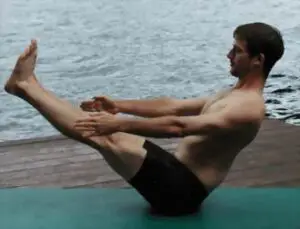
Sit on the ground with your legs unbending in anterior of you. Depress your hands on the ground a little beyond your hips. Raise down the top of the sternum and bend back rather, making certain your back doesn’t round. Stability of your weight on the tripod of your sitting bones and tailbone. Expire and bend your knees, then raise your thighs so they are bent about 45 degrees above the ground, with your knees still twisted. If possible, slowly arrange your knees, lifting the tips of your toes rather above the level of your eyes. If that is not likely, keep your knees twist, and your ascend collateral to the ground. Safekeeping your heart open and your spine long, draw your shoulders back and expand both arms forward alongside the legs, collateral to the ground, with your palms facing in. Try to keep your lower belly flat and hard, but not hard and broad. Point your toes or flex across your heels, and breathe. Try to stay in the position for 10 to 20 seconds, slowly growing your time to a minute.
What are Follow-up poses for Paripurna Naukasana (full boat pose)?
Ubhaya Padangusthasana or Both Big Toe Position:
From Paripurna Navasana, take the exercise a step intense by the property onto the toes with your fingers. As you inhale stretch the legs upwards and conduct the arms stretched out in front of you and extend for the toes and expire attracting the tummy in and securing the abdominal muscles. Stability the body well bringing the full weight of the body at the center and make sure you are seated on the sit bones heaving the chest out completely. Pull in your body ascending while maintaining balance. Endure here for about 6 breaths if achievable or more depending on the capacity of the educator. With every expiration, extract the stretch extensively expiring the body upwards while throwing the chest out completely. Here the art of using the core strength is most important while still keeping the balance without bringing too much force to the hips and the sit bones. Issue by bringing the feet down slowly angling the knees and moderate in Dandasana.
Merudandasana or Spinal Column Position:
From Both Big Toe positions, one can instantly take the legs stretched externally while still holding on to the toes. Inhale and enlarge both the legs externally behind the hip holding on to the toes and lifting the spine rising exhaling totally. One should still have stability on the sit bones and not put too much oppression on the hips and the lower back while at the exercise of this position. Seated restfully on the sit bones take the weight of the body to the center of the body which is the element. The element of strength is what will help you continue the body balance. Originally the body will safely keep falling backward, which is normal and to keep away from this one could start with bending the knees a bit to carry on seated restfully. With recurrent exercise, one can slowly stretch the knees out tightening from the center to recurrent comfortable in the position. Stay put for about 6 breaths or more and watch the breath, as rigid breathing will bring instability to the body. Slow deep breathing will help you control the body greater and one can enjoy the position with a restful body and a restful mind. Release by bending the knees and conducting the legs down. Loosen in Dandasana.
Parivrtta Navasana or Revolved Boat Position:
Seated in Both Big Toe Positions, hold the toes with only your right hand and interconnect both the big toes in joining your right index finger and your right thumb. Inspire, and as you expire twist towards the left side, taking the left arm stretched out beyond you and conduct the gape towards the left palm. Stability of the body with slow deep breathing and as the blow (out) happens, take the stretch extensive in reverse. Stay here for about 4 breaths and slowly release coming back to the core. Now property the great toes with your left index finger and the left thumb, twist regarding the right stretching the right arm beyond you gaping at the right palm. Stay here for about 4 breaths and release coming to the core and slowly release the legs and come into Dandasana. This position works on acquiring the stability of the body while seated only on the sit bones without putting the full weight on the hips. This position also works on giving a deep stretch to the middle back with a twist.
Urdhva Mukha Paschimottanasana or Upward-Facing Intense West Stretch Position:
Here from Dandasana fold your knees and bring your feet close to you. Inspire and place the palms about the soles of the feet beyond the toes and stretch the arms out expanding the upper body upwards with below out. Inspire again and place the feet on the palms by taking the body a bit disposed of backward, lifting the legs out and up, and pointing the soles of the feet regarding the cover or the sky. As you expire tighten the abdomen muscles and conduct the face close to the knees or the legs pressing the chest towards the thighs. After a complete blow out begin slow deep breathing and continue the balance of the body, using the center muscle strength. Endure here for about 4 breaths or about 15 counts. Appreciate the body well here as holding in this position is essential for a lot of pivot with breathing and relax the body while still in balance. This position is the master of all balancing seated positions and the whole body is stuffed giving a great stretch to the legs and the shoulders.
Most of the yoga positions covered below the category of Next Level Follow-Up Positions are more for the center strength, and to work on this, it becomes certain to bring into practice those yoga positions that have a direct impression on the full abdominal muscles. Therefore, the practice of the Seated Cat-Cow Position or Upavistha Bitilasana Marjaryasana is a must, treating it as a warm-up for the abdominal muscles. Frequently practicing this position secures the development of digestion which finally will tighten these muscles to become strong sufficient to exercise the above-covered position.
What are the Modifications and Variations in Paripurna Naukasana (full boat position)?
- To make this position simple and to enjoy this position, one can exercise this in different ways or through some modifications. Some of them are highlighted under.
- If the legs are still to be worked at, one can fold the knees and slowly work at acquiring into the main posture with exercise. Keeping the knees curved will also help in the moderate strengthening of the hamstrings and the quadriceps.
- If stabilizing the body is not comfortable, place the hands on the ground or place the tips of the fingers on the ground except you.
- Working on yoga blocks placed except you and placing the palms on them would also act as a great support to maintain stability.
- Working with yoga straps around the feet and heaving your torso back to incline, can also work admiration to get confidence in this Boat Position.
- Placing blankets under your hips would support the sit bones well sufficient to take you deeper into the position and this can moderately help to master the genuine posture without support.
- Bringing support for the upper back with the wall will allow the right body adjustment for the position and one can still obtain the uses with the exercise of this support. But make certain you are not too far aside from the wall and the wall is just a support and one must not put the whole body weight on the wall.
- The most beneficial part of Paripurna Navasana is not the lower body but the torso. Enlarging the torso upwards is more beneficial than placing attention on stretching the legs to the maximum. Here one can use the wall keep up for the feet to get the maximum stretch for the torso by placing the tips of the toes on a wall while facing the wall during the exercise of this position.
- Under are some common variations of the yoga position Paripurna Navasana with a base position as Boat Position (Navasana).
What are the Precautions and Contraindications for the Paripurna Naukasana (full boat pose)?
Injury and Surgery:
Paripurna Navasana (Complete Boat Position) is challenging since the action of going into the position is essential to the whole body’s muscles and joints to be similarly unavailable. The joints such as the hips, knees, ankles, toes, rib cage, shoulders, and neck are all unavailable while entering and coming out of the position. Therefore, while holding the position, it is only the hips and shoulders
that are active. Therefore any injury to any part of the body connected to joints and muscles can be a contraindication and care should be taken into practice. Additionally, surgery connected to any part of the body (organs and joints) are also a contraindication and exercise should be avoided.
Adjustment and Physical Strength / Lack of Body-Breath Connections:
Paripurna Navasana (Complete Boat Pose) although is a core strengthening exercise, for students with dull shoulders, ankles, and knee joints should keep away from this exercise. Students with balancing problems and vertigo associated problems should avoid this position. Students with severe back pain, and those who are absent body breath awareness should avoid this position. Reason being the balance and adjustment are achieved only with this combination. However, for probationers, yoga teachers can start with first begining the Easy Boat Position (Sahaja Navasana). Also Raised Legs Position Variation Hands-On Ground (Uttana Padasana Variation Hands-On Ground) can be done at 30 degrees and 60 degrees to strengthen the center first.
Others: Senior citizens, pregnant women, and kids should avoid this exercise. Kids and Senior citizens do not have the core strength to control this position. Also stabilizing the sit bones can cause more harm than good, as in both cases of students the spine is weak or yet to be progressed. Pregnant women should avoid this position because of the pressure on the abdomen and it’s impossible to stabilize on the sit bone with the weight.
Eka pada Naukasana (One leg boat pose)
What is Eka pada Naukasana (One leg boat pose)?
Eka pada navasana is a basic seated asana that stronger the abdominal muscles. The name comes from the Sanskrit, eka, which means “one”; pada, means “foot” or “leg”; Nava, means “boat”; and asana means “position” or “posture.”
Eka pada navasana obey as a simpler version of and a preparatory position for navasana, in which the body structure a “V” shape balancing on the buttocks with the legs raised and arms increased straight. In the eka pada form, a one-foot reminder on the floor with the knee bent. In one more leg form, the bent knee drops to the side. For a deeper stretch, the grounded leg increases straight as in stick position. Eka pada navasana is called in English as one leg boat position.
Navasana is part of the primary sequence of Ashtanga yoga and is a basement in other schools of yoga because of its physical and mental uses. In inclusion to building core strength, the eka pada form is accepted to improve focus and concentration.
Habitually, the asana is a concept to start the Manipura (solar plexus) chakra because of its focus on the body’s center. By beginning the Manipura chakra across exercise of eka pada navasana, the yogi obtains self-approval and perception of power and energy. A healthy Manipura chakra helps the yogi to be self-motivated and significant.
What are the Health Benefits of Eka pada Naukasana (One Leg boat pose)?
One Leg Boat position strengthens the abdominal, center body strength, and the legs. This posture also helps upgrade balance, focus and concentration. Current or chronic injury to the abdomen, knees, hips, arms, or shoulders.
This position upgrades balance and increases the core muscles. The hip flexors gain as the leg raises and the shoulders assist in stabilizing.
- Decreases belly fat.
- Raise digestion.
- Refine blood circulation.
- Build up the spine and core muscles.
- Manipulation of the abdominal muscles.
- Build up the leg muscles.
How to Perform Eka pada naukasana (One leg boat pose)?
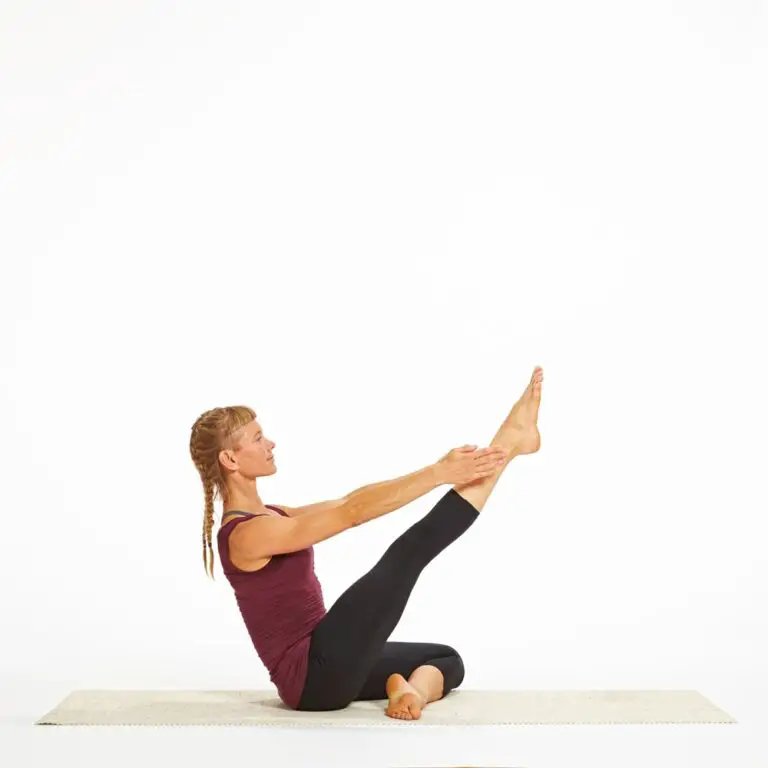
Put the leg down, externally rotate the hip, and area the leg in a half-butterfly position, with the strength of the right leg and arms if compulsory raise the leg and hold the ankle, balance on the tailbone, and considerately squeeze the tummy.
The under signal and yoga sequences added by yoga teachers show multiple ways to do the One-Legged Half Boat Position depending on the point of your yoga sequence and the capacity of your students.
Begin with Dandasana / Staff Position.
From a seated position, enlarge the right leg forward and bend the left foot in about the right thigh. Inspire the arms above the straight leg, similar to the ground, with the palms facing everyone.
Slowly bend back and inspire the right leg up, pressing out across the heel, letting your gape rest on the big toe.
Relax the shoulders away from the ears and draw the shoulder blades about the spine to raise and open the chest.
Breathe and hold for 2-6 breaths. Put as much effort into raising the chest as you are in raising the legs.
To release: slowly expire the leg down to the ground and free the arms down.
Repeat on one another side.
What are the Modifications and Variations in Eka pada Naukasana (One leg boat pose)?
- Bend the raised leg or intermix the fingers around the thigh.
- Use a yoga tie around the foot belongings on with both hands.
- Bring opposite arm to the opposite leg and perform an abdominal adjustment, twist leg closer to face, let go of leg, and balance.
What are the Contraindications for the Eka pada Naukasana (One leg boat pose)?
- Current or chronic injury to the knees, hips, arms, neck, or shoulders.
What are the Modifications and Variations in Naukasana?
Variations comprise the simple Ardha Navasana (Sanskrit: Half Boat Position) with feet and body only half-raised, and Eka Pada Navasana (one-legged boat position).
The more bulky Ubhaya Padangusthasana has both hands grabbing the toes or feet.
There are so many dissimilar modifications to the naukasana process or the boat position yoga. Start venture with the variations as you master the basic boat position. With the systematic exercise of the basic one, you will acquire more body work ability that will help in the variations.
- Advanced Boat Position:
You can start by discharging the modern boat position yoga by lying on the back. When the absolute body is straight, do check that there is no space between the legs. You should place the arms adjacent to the legs. Significantly inhale and raise your body to 45 degrees by continuing the position on your buttock. Check that your palms increase your knees and endure in the position for 10 to 20 seconds. You can extend the time as you encourage with the pass. Then as you bring down your body, expire and adjust. - Boat Position On Stomach:
Achieve this position by lying on the stomach. Conduct your arms right in the anterior of your head with no space between the legs. Compound your finger and slowly enlarge it by raising your body to 30 degrees. Now stay behind in this position for 10 to 20 seconds and extend the time depending on your holding capability. Conduct your body down as you expire and adjust.
What are the Precautions and Contraindications for the Naukasana?
Injury and Surgery:
Naukasana is difficult because it is necessary for the full body’s muscles and joints to be similarly busy in structure to come in the position. While going in and going out of the position, the hips, knees, ankles, toes, rib cage, shoulders, and neck are all needed. As a reaction, any tear to the joints or muscles in any part of the body can be a contraindication, and attention should be practiced during the method.
Adjustment and Physical Strength /Lack of Body-Breath Connections:
While Naukasana is a core strengthening exercise, it is not accepted by those who have weak shoulders, ankles, or knee joints. This position should be avoided for a starter who has to balance consider or is undergoing vertigo. It should also be avoided by people who have remaining back pain or absence of body breath consciousness. The purpose for this is that this junction is the only way to gain balance and adjustment.
Others:
This exercise should be avoided by young children, senior citizens, and pregnant women. The seniors and children need the necessary core strength to do this position. Stabilizing the pelvis can also origin more harm than benefit, as the spines of both pupils are weak or undressed. Because of the pressure on the abdomen and the inability to balance on the sit bone with the weight, pregnant women during the first to two days of the menstrual cycle must avoid this position.
Tip: Do not exercise this yoga position if you have got a low vital sign, severe headache, migraine, or if you have got allow from some chronic diseases or spinal disorders inside the latest past.
Asthma and heart patients are guided to avoid this position.
What are the Common Mistakes in Naukasana?
Do not mound your shoulders or upper back while doing Navasana. Quite, contract your spine long & chest open.
Above all, today I am dividing my point on how to avoid the common mistakes I see in navasana (boat position). This is a meaningful position for strengthening the core muscles, and worn to bring me a lot of rages, if I am being straight. It as well strengthens the hip flexors. If you are a beginner, just angle your knees and take the shins collateral to the ground. If you are partway, keep functioning as considers extending legs and keeping the chest raised. The chest collapse is generally the first object I see when the form is in agreement.
The biggest point I can award is to start with a rigid substructure by stopping the tissue under the sitting bones ahead you even collect the legs up. Doing this will make you feel more secure and tight in the position and will help you to balance greater. Try to breathe for 5 – 7 breaths ahead taking a break.
Rotate Nostril Breathing is a smart energy-opening breathing technique. This type of breathwork can be done as part of yoga or meditation exercise. Also, it helps to silence and immobile the mind.
Common mistakes in Alternate Nostril Breathing :
Going too fast:
The goal is not to complete the 5 or 11 rounds. It is about clearing the energy pairs and Angling the full nervous system. So, if you’re in a hurry up, do only 3 to 4 rounds. Yet, have a pattern and easy down the breathing.
Focusing only on one side:
The right nostril control changing (outgoing) nerve impulses. Such as the ones used when speaking, working with your hands, running etc. Therefore, the left nostril controls the receptive (incoming) nerve impulses. As, listening, seeing, feeling, smelling or tasting.
If we see too much in the right nostril, then one may enhance more anger, accept insomnia, etc. And utilising the left nostril can make one wildly self-critical, inactive, etc. Accordingly, stability in both the nostrils.
Inhalations are longer than exhalations:
While exercising Nadi Shodhan, it is simple to inspire longer after breath control. But, it is a leader to keep the expiration longer. As it helps in removing the body and mind. And the absorption and problems of oxygen happen while respiration.
If you receive from an obstructed nose, do not do the control. But, maintain the respirations longer.
Overactive mind:
If the mind is all over the position, conducting it back to the breath. Or, exercise a more asanas ( Naukasana, Ushtrasana, etc) and spirited breathing execution to help still the mind.
Using Thoracic breathing:
The breathing should be simple and deep. Use abdominal breathing or teacher breathing to check that the nervous system is relaxed. While gaining the maximum benefits from this technique. Avoid dropping/raising the chest when breathing.
Rounding the spine:
After a while, people are ready to round the spine. Thus, sit in a faithful posture that stays behind the spine straight.
The Breath is unstable-noisy:
Keep the breath impassive and rhythmic. Do not power the breath. That is, avoid breathing across the mouth or making any sound such as in a down breath.
Use of fingers:
One can use Vishnu mudra or Nasagra mudra, as its equity in the smart energy channels. The application makes the mudras simple.

